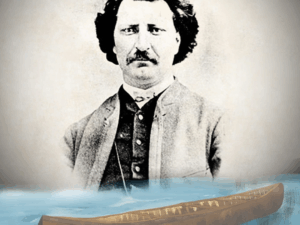Strangers become friends at KAIROS’ first Indigenous and Newcomers Friendship event

KAIROS’ Alfredo Barahona walks us through the first Indigenous and Newcomer Friendships event at St. Mary’s First Nation in Fredericton, N.B, on October 28, which he and Connie Sorio, KAIROS’ Migrant Justice and Asia Partnerships Coordinator, helped organize.
Connie Sorio and I arrive at the St. Mary’s First Nation’s Cultural Centre in preparation for the Indigenous and Newcomers Friendship event on October 28.
The “Medicine Wheel” with the four directions colours – Red, Black, Yellow and White – is painted in the middle of the floor. The walls are decorated with colourful Indigenous art — a river, the sun, an eagle, the “People of the Beautiful River”.
Inside, a group of seniors is participating in a painting healing and therapy class. As soon as Connie and I walk in they invite us to join them. “Grab a canvass and paint with us,” said Bonnie, a member of the group. They did not hesitate to invite two “strangers” to join them. I thought to myself “this is what building friendships is all about.” We met Mary, Bonnie, Mike, Emily, Clara, Myrtle and Catherine, their teacher.
After short introductions and explaining why we were there, Connie and I invite the painters to join us the next day at the Indigenous and Newcomers Friendship event.
They show interest and generously share the names of other community members we should contact and invite. They even point to someone’s house just in the back of the Cultural Centre. This warm welcome from the community helps to calm the natural anxiety we’re experiencing before the much anticipated event. They say they will bring their paintings and announce an auction they are working on.
“Thanks for coming to check us out,” says Bonnie. Again I thought about the concept of building friendships. Right there, Connie and I were shown what being welcoming and making friends is about. Now I am really looking forward to the gathering.
Saturday, October 28
The place is all set and ready to go. The Indigenous paintings that Myrtle brought, the ones on the walls and the medicine wheel in the centre of the hall, are beautiful. People are starting to arrive. Alma Brooks comes in. I feel such a relief to see her as she is our main contact. We hug each other. Alma says, “Welcome to St. Mary’s First Nation.” I reply, “Thanks for hosting us and helping us with this Indigenous and Newcomer Friendships event.”
The hall quickly fills. I estimate over one hundred people have gathered. What a great feeling to see such diversity. There are Indigenous people, newcomers from many different backgrounds and ages, and seasonal migrant workers from Mexico and the Philippines. It truly is a multi-cultural and intergenerational gathering. At one point, knowing the anxiety Connie and I experienced the day before, and seeing the level of conversation and activity, I ask Connie, “are you happy?” Her answer – “YES!”
Elder Alma Brooks opens the gathering with a Smudge Ceremony and welcomes the participants to St. Mary’s First Nation in Wolastoq territory. Wolastoq means “People of the Beautiful River”. The Wolastoqiyik, or Maliseet, are an Algonquian-speaking First Nation of the Wabanaki Confederacy. The Wolastoq people are working to restore the name of the Wolastoq River which Samuel de Champlain – one of the first colonizers – baptized the St. John River. They are asking the government to show good will and to demonstrate that they want to build nation-to-nation relationships.
In her remarks, Elder Alma Brooks tells us that she has met “beautiful people from South America, Africa and the Philippines who are experiencing the same struggles.” She says, “the most powerful voices I’ve heard are Indigenous women from South America.” She acknowledges KAIROS for facilitating this work and for helping build relationships.
Alma also says that events like this are important and to the newcomers says, “Newcomers, it is important that you educate yourselves about our reality. We need allies. I also want to hear your stories. I am interested in learning about your history.”
After listening to newcomer and settler guest speakers, we are treated to a delicious Indigenous and Filipino feast and cultural dances. In fact, when I taste the traditional soup prepared by our Indigenous friends, it immediately reminds me of Mexican food. When I ask the Mexican workers, “what does this remind you of?”, their answer is unequivocal; “Mexican Pozole”. Pozole is a traditional soup in Mexico, often served Christmas eve, but in many parts of the country all year round. It was truly a gift to experience this relationship building event. No doubt, more work needs to be done as true relationships and friendships are not built in one day, but I am deeply grateful to the Creator and to the people who opened their hearts, arms and communities to Connie and me.
Peace
Alfredo Barahona, KAIROS’ Indigenous,
Migrant & Network Relations Coordinator





